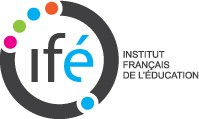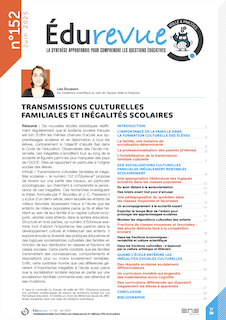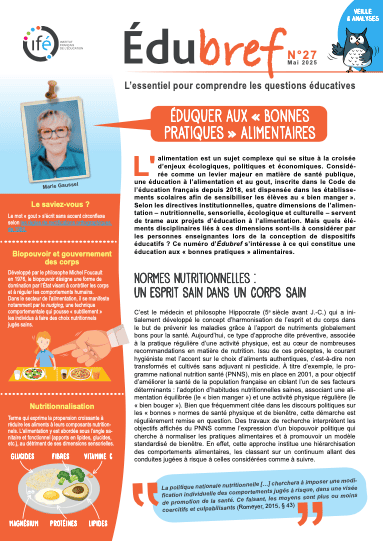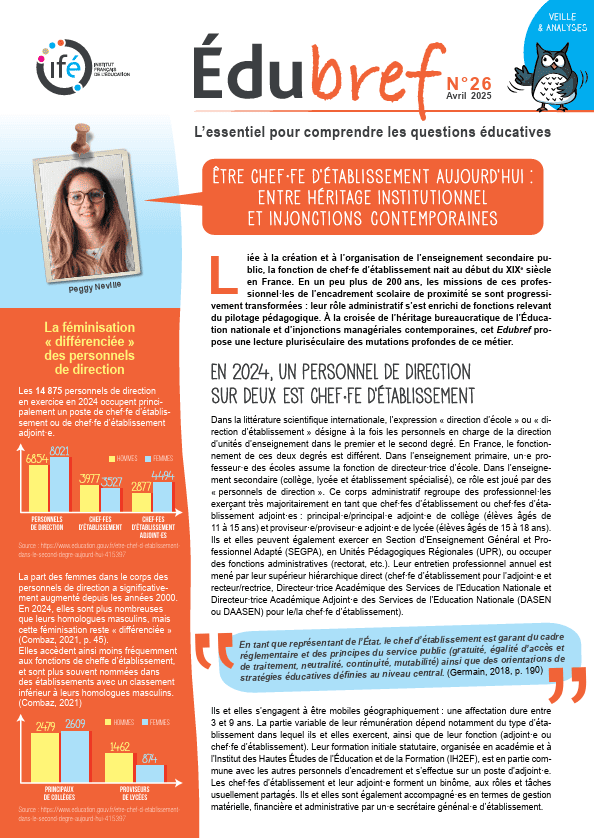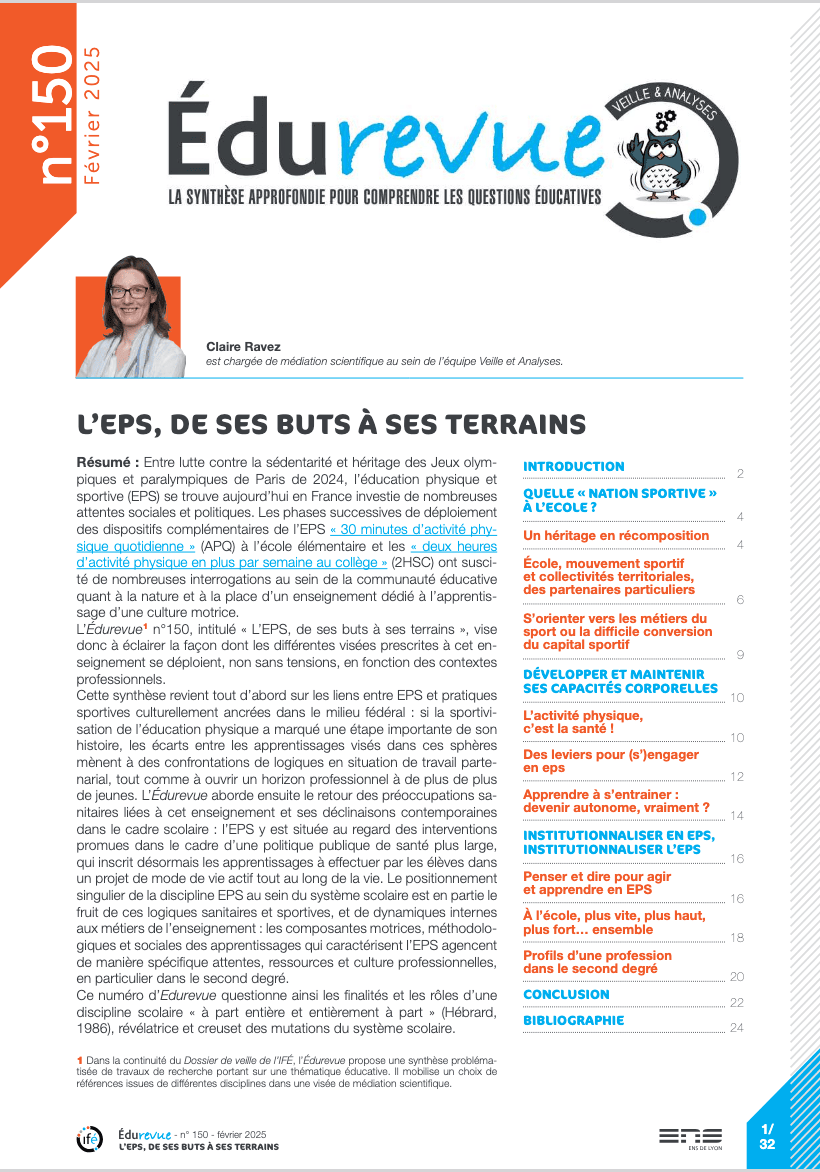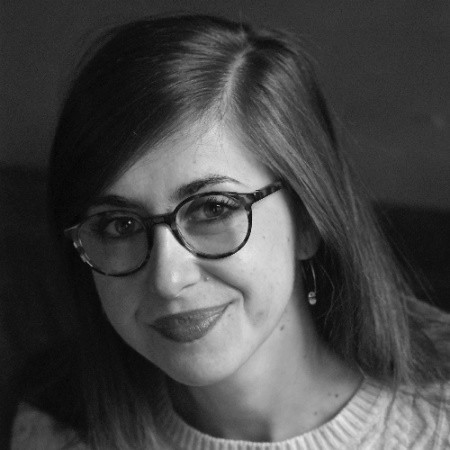Analyse d’une activité d’apprentissage a-professionnel et auxiliaire. — Le cas de l’apprentissage d’une activité instrumentée : le montage de film.
Auteur(s) : PETIT Lucie
Date de soutenance : 2012
Thèse délivrée par : Université Lumière-Lyon 2
Section(s) CNU : section 70 : Sciences de l'éducation
Sous la direction de : Philippe ASTIER
Jury de thèse : Leclerq, Gilles ; Marcel, Jean-François ; Olry, Paul ; Astier, Philippe
« Cette thèse porte sur l’apprentissage a-professionnel et auxiliaire d’une activité instrumentée dans un dispositif de formation universitaire et professionnalisant. La recherche s’inscrit dans le sillage de celles analysant un apprentissage avec les outils et méthodes de la didactique professionnelle (Pastré, 2011) et de l’approche instrumentale (Rabardel, 1995). Un apprentissage a-professionnel propose des tâches requérant une mobilisation des savoirs et savoir-faire d’un métier particulier, sans intention explicite de transfert de ces nouvelles capacités dans l’espace professionnel. Pourtant, le degré de qualité du résultat de la tâche requis se rapproche de celui exigé en formation professionnelle. Dans la situation investiguée, apprendre à monter un film vise la préparation de futurs spécialistes de la formation aux tâches liées à l’élaboration d’un produit multimédia éducatif. Dès lors, cet apprentissage est auxiliaire car il n’est pas l’objet de la situation de formation mais une condition nécessaire pour atteindre l’objectif annoncé. Il est à considérer comme un sous-but au service d’une intention de formation impliquant une centration moins exigeante sur l’apprentissage de son objet. Cela impose aux pédagogues une habileté pour appréhender l’essentiel utile à l’objectif annoncé et garantir la dynamique constructive de l’objet principal de l’apprentissage. La didactique professionnelle en analysant l’activité de référence, en questionnant la compréhension et la conceptualisation de la tâche, fournit un cadre riche pour étudier l’activité d’apprentissage a-professionnel et auxiliaire.Le corpus d’analyse concerne 24 étudiants de deux promotions d’un cours sur l’utilisation des Tice d’un Master 1 « Métiers de la formation », répartis en dix équipes. Une observation, un entretien en autoconfrontation au film de l’observation et une courte expérimentation (exercice de montage) permirent la production de données.L’analyse de l’activité de référence a dégagé une structure conceptuelle de la situation « montage de film documentaire » et le concept d’écriture, entendu comme transformations d’un fond afin d’obtenir une forme expressive et intelligible. Après l’analyse de la tâche didactique et du progiciel de montage prenant en charge l’ensemble des actions transformatrices, deux hypothèses furent formulées : l’instrument élaboré par les apprenants doit correspondre aux exigences de la tâche pour que l’artefact de production ne soit pas un obstacle à l’activité d’apprentissage ; déterminer quelques éléments de la base d’orientation (Galpérine, 1966/1980) et des règles d’action mobilisés dans l’activité d’apprentissage est un moyen de documenter la construction d’un modèle opératif. La première hypothèse fut confirmée. L’apprentissage a-professionnel et auxiliaire conduit à une genèse instrumentale circonscrite par les formateurs et les apprenants. L’instrument est limité au fragment du progiciel utile pour atteindre le but de la tâche. La seconde hypothèse est en partie validée. Une base d’orientation proche des éléments de la structure conceptuelle de la situation s’élabore lors des deux premières étapes du montage. Puis des règles d’action s’appuyant sur cette base conduisent à un jugement pragmatique : une activité filmée doit être visible (qualité et contenu des images) et compréhensible (structure et éléments sonores). L’analyse des données d’expérimentation indiquent un niveau de connaissance du montage et l’ébauche d’un modèle pour agir. Parce que la communication à autrui est centrale et que chaque équipe privilégie un type de vraisemblance, des catégories (modèles-type indiquant des niveaux de conceptualisation) ont été proposées : congruent, casuel, itératif et casuel-itératif. Vraisemblance et communication documentaire à autrui se rapprochent du concept d’écriture. Toutefois dans la situation d’apprentissage, ils ne sont pas une réponse à la situation mais demeurent des questions. »
Abstract
Analysis of an a-professional and auxiliary learning activity — The case of learning an instrumented activity: film editing
« This dissertation deals with a-professional and auxiliary learning of an instrumented activity in a university training programme. This research is in line with the analyses of learning with tools and methods of professional didactics (Pastré, 2011) and instrumental approach (Rabardel, 1995).The a-professional learning framework suggests a certain number of tasks requiring a mobilization of knowledge and skills related to a specific job, without any explicit intention of transferring these new capacities to the professional arena. Nevertheless, the required degree of quality of the task outcome can get closer to that demanded in vocational training. In the investigated situation, the underlying goal of learning how to edit film is to prepare future training experts to perform tasks connected to the design of an educational multimedia product. From then on, this learning becomes auxiliary because it is not the obje-ct of the training situation but a necessary condition to attain the stated purpose. One can consider it as a sub-goal favouring a learning intention and involving a less demanding focus on its obje-ct. Consequently, educators have to deal with the heart of the matter which is useful for the stated purpose and guarantee the constructive dynamics of the central learning obje-ct. By analyzing the reference activity and questioning the understanding and conceptualization of the task, professional didactics provides a rich framework to study the activity of a-professional and auxiliary learning.This research covered twenty-four students of two classes distributed in ten teams and attending a course on the use of ICT under the 1st year of the Master’s program on “Training jobs”. An observation, a self-confrontation interview regarding the observation movie and a short experiment (editing exercise) made it possible to generate data.The analysis of the reference activity highlights both a conceptual structure of the situation “editing documentary movie" and the concept of writing, viewed as transformations of a content to obtain a meaning and understandable form. Following the analysis of both the didactic task and the software package which performs all the editing actions, we formulated two hypotheses. The instrument developed by the learners must match the task requirements so that the artefact of production does not become an obstacle to the learning activity. Determining elements of the orientation base (Galperin, 1966/1980) and rules of action mobilized in the learning activity is a means to document the development of an operative model.The first hypothesis was confirmed. The a-professional and auxiliary learning leads to an instrumental genesis limited by trainers and learners. The instrument is limited to the fragment of software useful to reach the purpose of the task.The second hypothesis is partially validated. During the first two stages of editing, an orientation base close to elements of conceptual structure of the situation develops. Then rules of action resting on this orientation base leads to a pragmatic judgment: a filmed activity must be visible (pictures quality and content) and understandable (structure and sound elements). The data analysis of the experiment provides a certain level of knowledge of film editing and the sketch of a model in order to act. Because communication with others is essential and because each team puts forward a type of plausibility, categories (models indicating various levels of conceptualization) were proposed: congruent, fortuitous, iterative and fortuitous-iterative. Plausibility and documentary communication with others are within the realms of writing. However, in the learning situation, they are not an answer to the situation and hence, remain questions. »
URL : http://theses.univ-lyon2.fr/documents/lyon2/2012/petit_l/info

